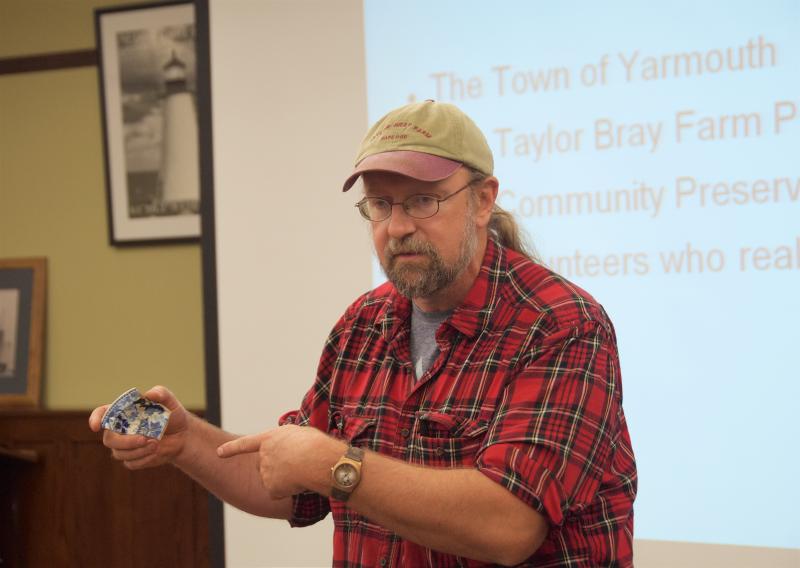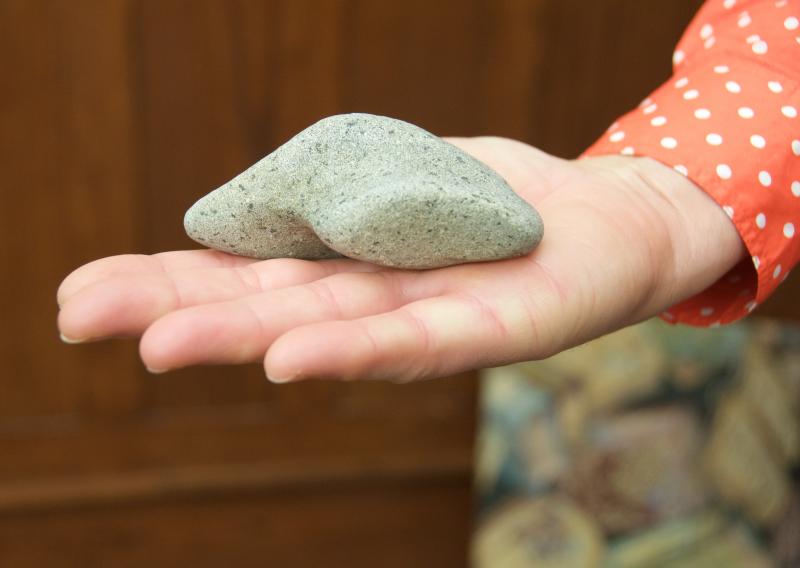Archaeologist explains why people dig artifacts
New England is sometimes considered an “archaeological backwater,” says Craig Chartier, yet ancient artifacts can be found without too much digging.
“We don’t have big ruins,” he said. But spearheads, pottery shards and the bones of prehistoric animals could be at the beach, on a trail or in your backyard.
“You never know where you’re going to find them,” said Chartier, the principal archaeologist for the Plymouth Archaeological Rediscovery Project.
On Wednesday, he spoke at the Mattapoisett Library about local archaeology digs and identified objects found in the area.
According to Chartier, many “ephemeral” artifacts are no more than a foot below the surface, making them ripe for trampling.
“They’re so hard to see that they’re easy to destroy,” he said.
One of Chartier’s recent projects has been working at the Taylor Bray Farm in Yarmouth, a site preserved by the town, where professionals and volunteers have found pieces dating back six millennia as well as more than 30,000 pieces from settlers in the 1600s.
“There’s no other dig like this that’s community involved year after year,” he said.
While many pieces have been uncovered, lots of items found in any dig turn out to be nothing.
“A lot of times you get stones that look like something but aren’t anything,” Chartier said. “The most common phrase you’ll hear if you volunteer at the site is ‘No, that’s just a rock.’”
Members of the audience brought pieces for the archaeologist to inspect, and some, as Chartier predicted, were indeed just rocks.
“Maybe I’m seeing things in the clouds,” said one woman. “I’m seeing an embryonic fossil in it.”
Nope. Like the contents of Charlie Brown's Halloween bag, it too was a rock.
Susan Wainio’s rock, however, was an ancient spearhead, around 3,500 years old, according to Chartier.
Wainio said the spearhead was her grandmothers, and might have been found in Rochester.
Another member of the audience had a 19th century clay pipe.
These old, long-discarded objects are a tangible part of history that continues to fascinate us and connect us with the past, said Chartier.
At Taylor Bray Farm, a scythe sharpening stone was found that could be related to an 1836 newspaper article describing the near-death of a young Taylor boy whose brother sliced his belly with a scythe.
“We can take the historical documents that we have… and we can tie them together with the artifacts that we find,” Chartier said.
For him, and many others, archaeology creates a connection with history, one that Chartier invited everyone to take part in.
“We do archaeology because it’s a way of literally touching the past,” Chartier said.
Chartier said volunteers are welcome at Taylor Bray Farm. For more information, visit www.plymoutharch.com.
















